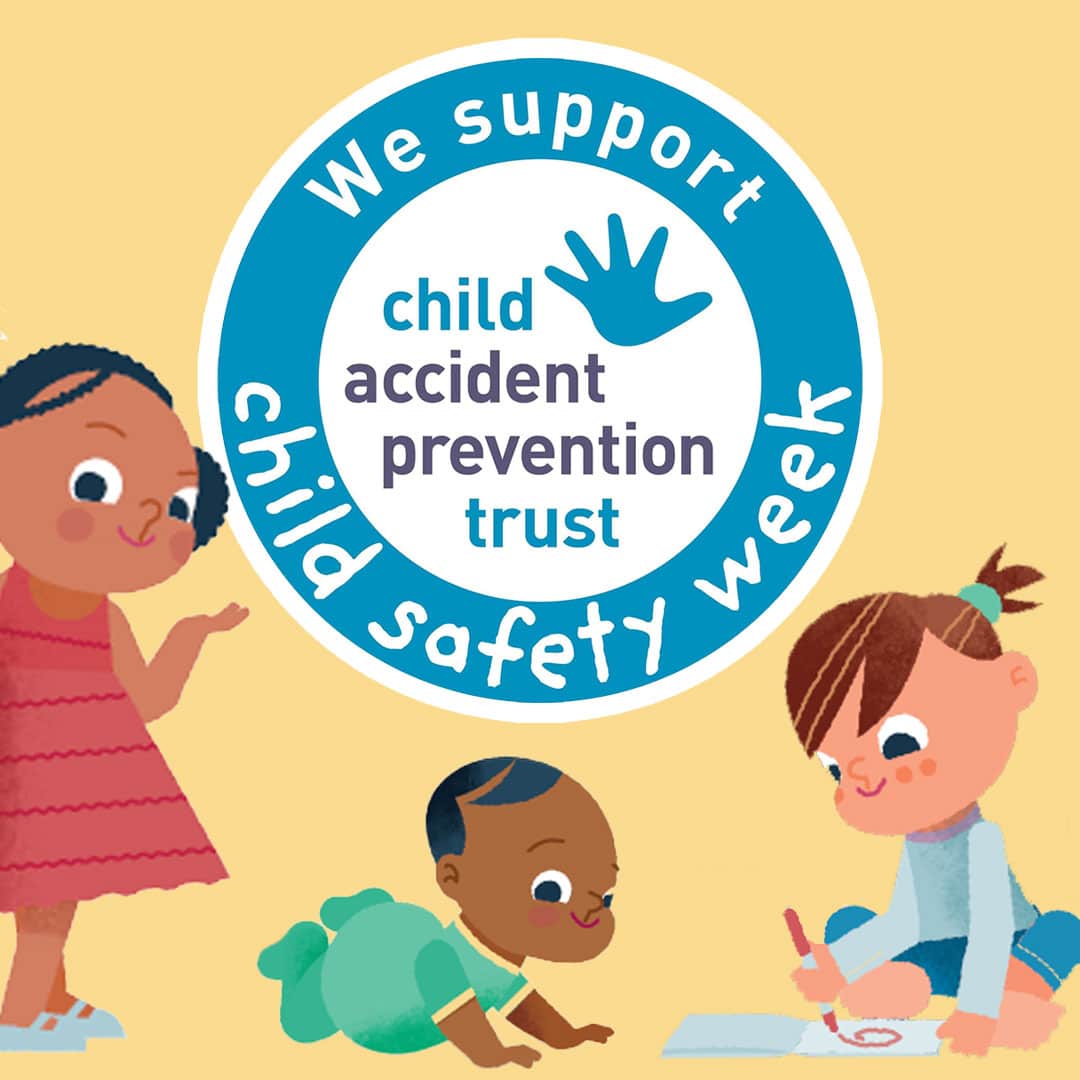7th June 2024
In support of Child Safety Week (#ChildSafetyWeek), we are delighted to share this Voices blog by Louise Saunders, Clinical Team Lead (Health Visiting) for Southern Health NHS Foundation Trust, as she reflects on the role of health visitors in promoting safety in the home.

Louise Saunders, Clinical Team Lead (Health Visiting) for Southern Health NHS Foundation Trust
During Child Safety Week (3-9 June 2024), I have taken some time to reflect on the important role that health visitors can play in promoting safety within the home for children aged 0-5 years and their families.
I qualified as a paediatric nurse more than 20 years ago and have always been passionate around the importance of keeping children safe and well whilst appreciating the evidence-base to ensure that the best quality of care is provided at all opportunities. This is something that I have been able to champion since transitioning to the community as a specialist community public health nurse. I have also successfully completed a rapid review of the evidence surrounding effective accident prevention interventions and the health visiting role in the provision of this, and more recently a quality improvement fellowship that sought to understand the barriers to effectively follow up emergency department attendances in 0–5-year-olds.
Unintentional injuries experienced by children under the age of five place a significant burden on the child and their family and can have long-lasting and far-reaching consequences for the whole family[1]. Unintentional injuries for the under-5s tend to happen in and around the home. They are linked to several factors including[2]:
- child development
- the physical environment in the home
- the knowledge and behaviour of parents and other carers (including literacy)
- overcrowding and homelessness
- the availability of safety equipment
- consumer products in the home.
Five causes account for 90% of unintentional injury hospital admissions for this age group and are a significant cause of preventable death and serious long-term harm[3]. These are:
- choking, suffocation and strangulation
- falls
- poisoning
- burns and scalds
- drowning.
Unintentional injury for children aged 0-5 also place a strain onto the wider healthcare system, yet the specific needs of babies and young children are not recognised within the NHS Urgent Care Recovery Plan. The Institute of Health Visiting (iHV) report on Understanding the rise in 0-4 year old the rapid increase in Emergency Department (ED) attendances and changing health visiting practice highlights the important role that health visitors play in tackling this issue through an up-stream preventative approach. This includes working with families to improve their health literacy by sharing key health-promotion messages on the management of minor illness/accidents and sharing advice and resources around keeping children safe in and around the home.
Health visitors can have an impact on accident prevention in several ways, and at key touchpoints, by leading the delivery of the Healthy Child Programme which supports the health and development of children aged 0-5 and their families. We take a positive approach to health and can deliver messages surrounding accident prevention which are appropriate to the child’s age and stage of development, whilst ensuring that we make reasonable adjustments to ensure parental understanding. Our universal service offer provides us with a unique opportunity to reach all families, build trusting relationships, develop parental confidence and knowledge of accident prevention, amongst other key public health messaging such as robust and open discussions surrounding safe sleep and ICON. If we can do this well, we will increase parental health literacy and, in turn, reduce Emergency Department attendances due to Unintentional Injury[4].
Health visitors can also undertake targeted accident prevention interventions, following attendances at the Emergency Department or other minor injury units. Health visitors are ideally placed to offer preventative suggestions that can reduce the chances of repeat attendances to Emergency Departments. Recent service user feedback, obtained as part of a quality improvement project that I led, demonstrated the value of completing a follow-up contact with families whose children had recently attended the Emergency Department. Families said they felt reassured by the contact with the health visitor following their child’s attendance. This also provided an opportunity to connect families to evidence-based resources to improve their health literacy and confidence in decision making on child safety and the management of minor illnesses. This included sharing information on:
- Healthier Together – a web-based resource developed by health professionals which aims to provide parents/ carers with a trusted source of information on a range of health topics.
- ChatHealth – our well-regarded text messaging advice service. ChatHealth is a safe and secure messaging platform which enables parents and carers to receive confidential health information and personalised advice from healthcare professionals.
- Signposting to local services, such as the pharmacy, to ensure the right care is provided by the right person at the right time.
Our children and family’s strategy to reduce unintentional injuries also includes:
- “Accident Prevention” being discussed locally as part of a 3-4 month contact which aims to ensure that health promotion information is shared with families effectively.
- Barriers to follow-up of Emergency Department attendances are also being worked on internally through the development and provision of training on accident prevention. This ensures that all members of the skill mix team are provided with relevant up-to-date information on key priority topics for child safety, such as water safety, dog safety and button batteries.
- The development of a flow chart to aid decision making of practitioners surrounding accident and emergency follow-up.
- Collaboration with our local acute trusts to ensure that children are appropriately highlighted to the health visiting service in a timely way.
Free resources to share
By helping new parents to stay one step ahead of their developing baby, health visitors and members of their teams can play a crucial role in keeping children safe. Child Safety Week is the Child Accident Prevention Trust’s (CAPT) annual community education campaign, acting as a catalyst for thousands of safety conversations and activities UK-wide. They help families build confidence and skills in managing the real risks to children’s safety. CAPT has lots of free resources for health visitors and their team members, so don’t miss out – grab your free Child Safety Week Resources here.
The iHV featured in an exclusive ITV news story in December last year about potentially unsafe baby products with CAPT and the Lullaby Trust. ITV News completed an investigation which found that items being sold online may pose a risk to babies. This was something that had been highlighted by health visitors as a concern. You can watch the news piece and read the online story with extended interviews here.

Louise Saunders, Clinical Team Lead (Health Visiting) for Southern Health NHS Foundation Trust
References
- [1] Public Health England (2018) Reducing unintentional injuries in and around the home among children under five years. https://bit.ly/4e8Hujl
- [2] Public Health England (2021) Guidance Early years high impact area 5: Improving health literacy, managing minor illnesses and reducing accidents. https://bit.ly/414IQ8E
- [3] Public Health England (2021) Guidance Early years high impact area 5: Improving health literacy, managing minor illnesses and reducing accidents. https://bit.ly/414IQ8E
- [4] Public Health England (2021) Guidance Early years high impact area 5: Improving health literacy, managing minor illnesses and reducing accidents. https://bit.ly/414IQ8E







